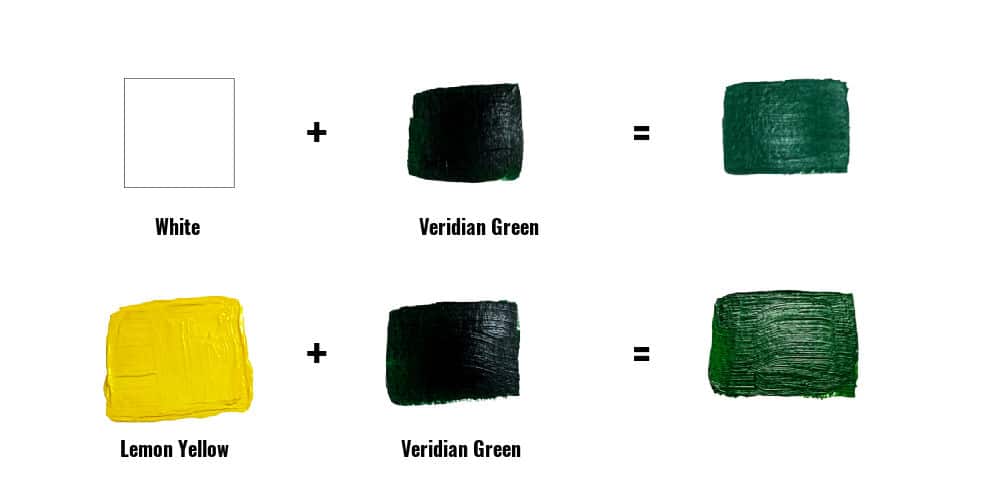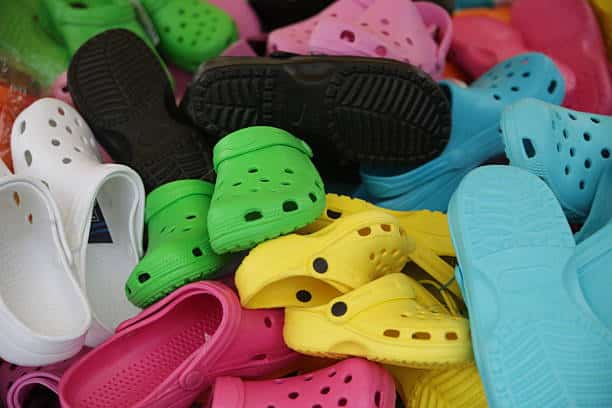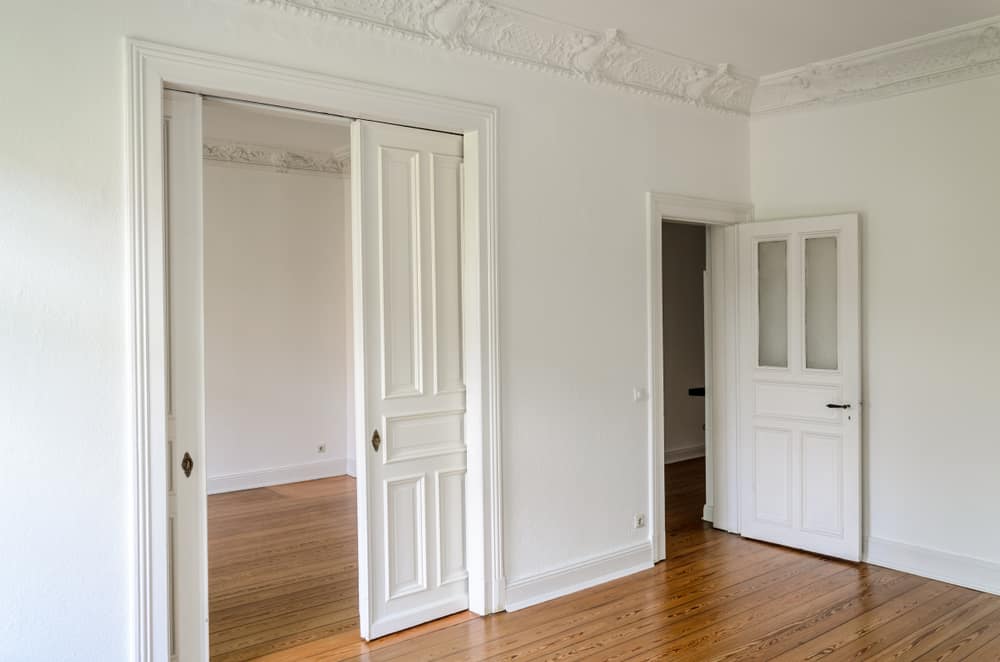Are you an artist looking to master the art of color mixing and unleash your creativity on the canvas?
Look no further, as we delve into the fascinating world of creating the perfect shade of green.
Green, a color often associated with nature, vitality, and harmony, holds a special place in artistic creations.
Whether you’re a beginner or an experienced artist seeking to elevate your work to new heights, understanding how to mix various shades of green can breathe life into your paintings and bring depth and dimension to your artistic expressions.
Table of contents
How to Make Green
To make the color green, follow the steps below:
Understanding Color Theory for Perfect Green Shades
Creating the perfect green hue is an art in itself, blending colors in just the right proportions to achieve that vibrant, natural tone.
At its core lies an understanding of color theory, where primary colors mix to form secondary colors.
To attain green, a primary color like yellow combines with a secondary color, blue. But mastery in color-mixing goes beyond this basic principle.
Start with Quality Pigments
The foundation of any great artwork is the quality of the materials used. When aiming for the perfect green, begin with high-quality pigments.
These offer richer and more vibrant colors, allowing for smoother blending and a broader spectrum of shades. Opt for professional-grade paints or pigments to elevate your color-mixing game.
Embrace the Color Wheel
The color wheel is your guiding map in the world of color theory. Understanding its dynamics helps in creating various shades of green.
Experiment with different shades of yellow and blue from opposite sides of the wheel to find the right balance for your desired green hue.
Remember, the closer the colors are on the wheel, the easier it is to create harmonious blends.
Read ALSO: How to Make Cotton Candy: Sweet Creation Delight
Mastering Color Combinations
Achieving the perfect green involves experimenting with various color combinations. For instance, mixing lemon yellow with a touch of cerulean blue might result in a vivid lime green, while a blend of cadmium yellow and ultramarine blue could yield a deeper forest green. Keep experimenting with different proportions until you reach the precise shade you desire.
Understand Color Intensity and Value
Beyond the actual hue lies the intensity and value of the color. Intensity refers to the brightness or dullness of a color, while value signifies its darkness or lightness.
Adjusting these aspects can drastically alter the final shade of green. To intensify a green, add more pigment, and to lighten it, incorporate white or a lighter shade of yellow.
Be Patient and Practice
Like any art form, mastering color mixing requires patience and practice. Don’t be discouraged by initial attempts that might not yield the desired results.
Each blend teaches something new, refining your skills and leading you closer to that perfect green.
Mix, Observe, Adjust
The key to improvement lies in the cycle of mixing, observing, and adjusting. Mix your colors, observe the resulting shade, and then adjust the proportions or hues accordingly. This iterative process allows for fine-tuning and refining until you achieve the green that resonates with your artistic vision.
How to Become Green Easily
Blending blue and yellow together is the simplest method to create green. Once you have the desired color, gradually add yellow while starting with blue.
Green = Blue + Yellow
Changing the amount of blue or yellow will yield a wide range of green hues!
Tone, shade, and tint creation is also possible. You should add white, black, and gray for those, in that order.
How to Make Green Paint
Paint in acrylic
Water-based acrylic paint works well on a range of surfaces, including canvas, plastic, glass, and metal.
They are packaged as a thick liquid and can be found in jars, tubes, or bottles.
Cool yellows, such as lemon yellow or cadmium yellow light, work best when combined with green. You can use cerulean blue or phthalo blue to achieve different colors of green.
Using acrylic paints, combine phthalo blue and lemon yellow to create green.
First, fill a small bottle or your palette with squeezed yellow paint. A tiny bit of blue paint should be added. Using a brush or palette knife, combine the two colors.
Then, to get the correct green hue, you can modify the color by adding more yellow or blue paint. Using your brush, you may even combine acrylic paints directly on the canvas as you paint by blending one into the other.
Whether you use heavy body, fluid, gel, or paste acrylic paint, the same recipe will function. Next, you can color any object, including minis, models, and figurines, with your green acrylic paint.
Paint with oil
Oil paints can be blended directly from the tube, or you can use turpentine or another solvent to thin the paint first.
Combine phthalo blue and lemon yellow to make green oil paint.
First, squeeze some lemon yellow paint into a jar or onto your palette. Phtalo blue should be added next to it. Gradually start combining the colors, adding additional blue or yellow as necessary.
Textile paint
All you need to produce green fabric paint is blue and yellow. Both of them are primary hues.
Mix equal parts blue and yellow fabric paint to get green fabric paint.
To create the right shade of green, combine blue and yellow paint in a small container. If necessary, adjust the color by adding more yellow or blue.
Use the green fabric paint on items made entirely of cotton, like canvas shoes, denim, and t-shirts. Use a hot iron to set the paint on the fabric once it has been painted.
In order to give fabric paints the required qualities, acrylic paint is typically combined with a fabric medium. You can create your own by combining fabric medium and acrylic paint.
Read Also: How To Make A Lizard In Little Alchemy: Imaginative Crafting In a Virtual World
Ink and watercolor
Paint that is created from finely ground pigment bound in gum Arabic is called watercolor, or aquarelle. Watercolor paints are available as solid blocks or as flowing paint in tubes.
The pigments in watercolors are identical to those in acrylic paints, but they are bound differently.
Combine lemon yellow with phthalo blue to make green watercolor paint.
Water can be used to dilute watercolors, giving the paintings their distinctive fluid quality. To get the right shade of green, play about with the ratios of each color and the amount of water.
Gouache Paint Gouache paint is comparable to watercolor paint, except it is opaque instead of translucent because it has an extra ingredient called lime powder.
Conclusion
Creating the perfect green through color-mixing is an intricate process that demands an understanding of color theory, experimentation, and dedication to refinement.
By starting with quality pigments, embracing the color wheel, mastering combinations, understanding intensity, and value, and persistently practicing, you’ll inch closer to unlocking the secrets of creating the most captivating greens for your artistic endeavors.
References
Recommendations
- How to Make Sand in Little Alchemy: Creative Gaming Strategy
- How To Make A Lizard In Little Alchemy: Imaginative Crafting In a Virtual World
- How to Make a Strength Potion: Fantasy Brewing Creativity
- How To Make Collage On iPhone: Digital Photo Arrangement Creativity
- How to Make Cotton Candy: Sweet Creation Delight






